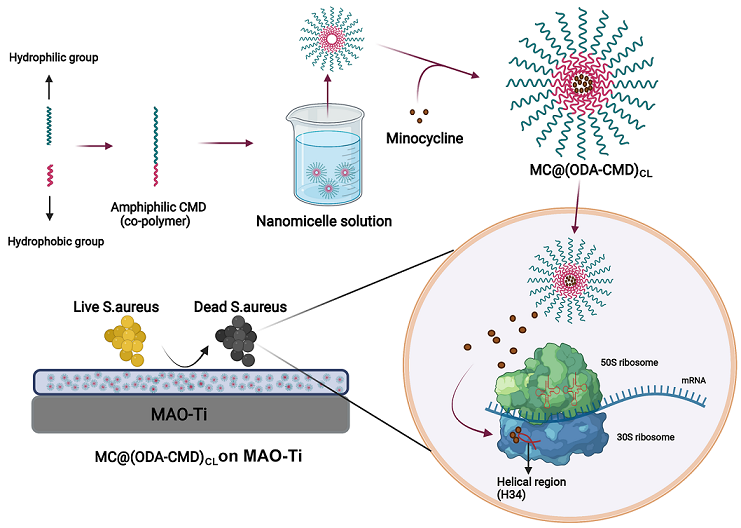Peri-implantitis occurs at a significant rate, which is the leading cause of implant failure. The main reason for this unwanted complication is bacterial invasion and biofilm formation. To reduce the incidence of peri-implantitis, we constructed a carboxymethyl dextran (CMD) based nanomicelles antibacterial coating on microarc-oxidized titanium (MAO-Ti) surface. After cross-linking, the drug-loaded nanomicelles were spherical with a particle size of 130nm and uniformly dispersed. Zeta potential was negative, and the absolute value was greater than 10 mV, effectively avoiding micelles aggregation. It was observed by dynamic light scattering (DLS) that the stability of nanomicelles was significantly improved after cross-linking. The hemolysis rate of micelles was less than 5%, and the overall survival rate of human umbilical vein endothelial cells was more than 90%. After being coated on MAO-Ti surface, the cumulative drug release rate of drug-loaded nanomicelles reached 86.6% after 360 hours. Fluorescence staining of immobilized bacteria showed more dead bacteria on the coating surface, and the number of live bacteria was significantly reduced. It was concluded that dextran-based nanomicelles, which showed long-term drug release properties and excellent biocompatibility, are potential drug carriers for fabricating antibacterial coating on titanium surfaces.

